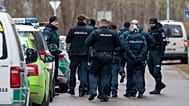State-of-the-art multi-functional stadiums are designed to impress more than the average football fan.
In the past, older football stadiums were nearly home to a local team and may have prioritised practicality over aesthetics.
Today's modern grounds are designed with much more in mind. These new and improved structures are a fusion of innovation, functionality, and sustainability.
From the Tottenham Hotspur Stadium, which reopened in 2019, to the redevelopment of Real Madrid's Santiago Bernabeu, diverse approaches to stadium construction have redefined sports architecture.
Sustainability takes centre stage as stadiums prioritise energy efficiency and environmental responsibility. Clubs are now more than ever integrating renewable resources and implementing eco-friendly practices to reduce their carbon footprint.
Yet, greater facilities come with higher costs. As stadiums strive to maximise commercial success by serving as multipurpose venues, the investment required for construction and upkeep has reached unprecedented heights.
Within the expanding realm of sports, the development of contemporary stadiums as vibrant urban symbols encapsulates the essence of progress and innovation.
















